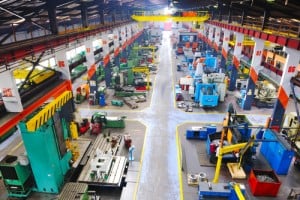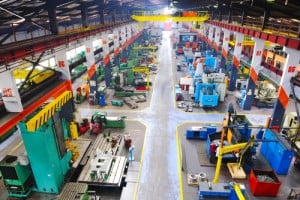OEE and Continuous Improvement: Two Peas in a Pod – Part 2
In my last discussion on OEE I mentioned that when I’m asked the question “where should I get started with improvements on the shop floor?” I usually answer that OEE is the best place to start.
OEE is a tool that helps manufacturing companies improve their bottom line by reducing costs, increasing quality, and increasing productivity. OEE and Continuous Improvement are like two peas in a pod. OEE is a tool that supports the Continuous Improvement initiative!
The Overall Equipment Effectiveness (OEE) metric is a function of the complete manufacturing system, process line, or individual piece of equipment.
The components of OEE are:
- Availability
- Performance
- Quality
OEE is a comprehensive metric that indicates the relative productivity of a piece of equipment compared to its theoretical performance. While this metric can be determined for all equipment in the factory, it is particularly important for bottleneck equipment as it identifies areas critical for the improvement of equipment productivity.
The OEE value has many other uses:
- A method for measuring the starting point of a plant or line or equipment. The values can be compared over time to quantify the levels of improvement.
- A way to help identify bottleneck pieces of equipment.
- A way to identify the true productivity losses.
- A way to prioritize your efforts to increase OEE and improve productivity.
Overall Equipment Effectiveness = Availability * Performance Rate * Quality Rate * 100 %
The availability of the equipment is not just assumed to be the length of the shift in which it is to operate. To effectively calculate the availability of a machine two values are required:
- Possible Operating Time of the Machine
- Actual Operating Time of the Machine
Availability = Actual Operating Time / Possible Operating Time * 100 %
Actual Operating Time = (Possible Operating Time – Unplanned Downtime)
Possible Operating Time = (Total Time – Planned Downtime)
As with the availability of the machine, the performance is not simply the number of items produced in a shift. The performance rate is more accurate. It is the product of the following three factors:
- Theoretical Machine Rate
- Number of Items Produced
- Operating Time
Performance Rate = Theoretical Machine Rate * Number of Items / Operating Time * 100 %
Unlike availability and performance, the quality rate is a little more straight forward. The quality rate is the product of the following two factors:
- Number of Items Produced – First Quality
- Number of Items Produced – Second Quality and Scrap
Quality Rate = Number of Items Produced First Quality / (Number of Items Produced First Quality + Number of Items Produced Second Quality and Scrap) * 100 %
Overall Equipment Effectiveness = Availability * Performance Rate * Quality Rate * 100 %
According to industry best practices world-class OEE is considered to be:
- Availability – >90%
- Performance – >95%
- Quality – >99%
- World-Class OEE – >85%
While world-class OEE is 85% or greater, Don’t Panic if your OEE is somewhere around 50%. That’s actually pretty normal. It just means that you’ve got some opportunities for improvement. And, to be honest, most all plants start out with OEE numbers around 50% or lower. It’s all OK. Don’t Panic!
OK, that’s got to be like drinking through a fire hose. But, if you look through all this stuff it really does make sense. The math is actually pretty straight forward. And, it’s all very simple but very powerful.
So, if you’re trying to figure out where to start with improvements on the shop floor take a good look at OEE. With OEE it’s possible to increase productivity and throughput by 10% to 20% and reduce losses and waste by 5% to 10%. And that’s something worth shooting for!
So, my apologies for throwing so much at you so fast. But, you’ve now got the basics of OEE. Take a look at it. Look up a few references. Talk to a few people. Let me know what you think. Good luck!



